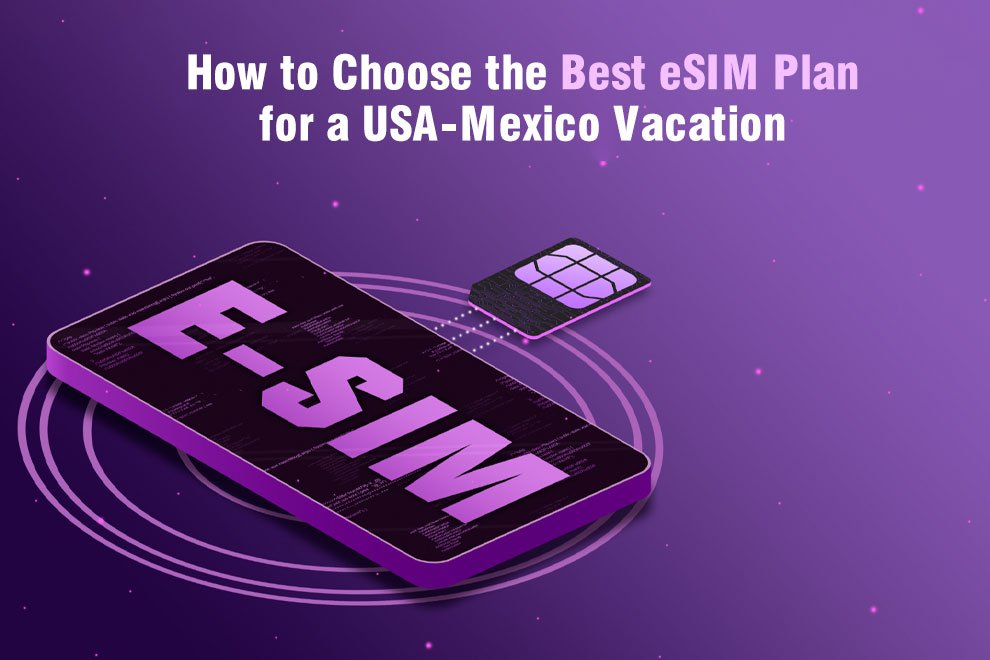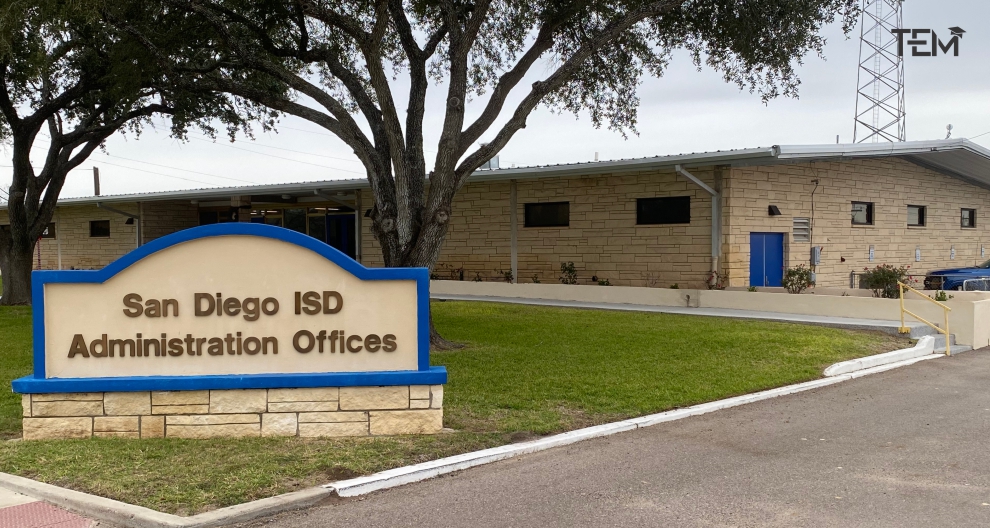Planning a vacation across the USA and Mexico is exciting, but staying connected can be a headache. From navigating bustling cities like New York or Mexico City to exploring remote beaches in Baja California, you need reliable internet without breaking the bank. An eSIM can solve these problems, offering a digital, flexible way to stay online. This guide will walk you through choosing the best eSIM plan for your USA-Mexico trip, addressing common traveler pain points like high roaming costs, spotty coverage, and setup confusion.
Understanding eSIMs for Cross-Border Travel
Traveling between the USA and Mexico means crossing borders, which often brings connectivity challenges. Whether you’re a digital nomad working remotely or a tourist sharing photos, an eSIM can keep you online without the hassle of physical SIM cards. Let’s break down what eSIMs are and why they’re a game-changer for your trip.
What Is an eSIM and Why It Matters for Travelers
An eSIM, or embedded SIM, is a digital SIM card built into your phone. Unlike traditional SIMs, you don’t need to swap physical cards. Instead, you download a plan via a QR code or app, activate it, and you’re connected. For travelers, this is a lifesaver. Imagine landing in Los Angeles, then driving to Tijuana—you don’t want to hunt for a local SIM store or deal with language barriers. An eSIM lets you set up data before you leave, ensuring instant connectivity.
eSIMs are especially useful for USA-Mexico vacations because they support seamless network switching across borders. You can explore our esim for usa and mexico plans, which offer tailored options for cross-border travel. With eSIMs, you avoid the stress of losing signal when crossing from San Diego to Rosarito, keeping your maps, messages, and apps running smoothly.
Common Connectivity Challenges in the USA and Mexico
Travelers often face three big issues: sky-high roaming fees, inconsistent coverage, and the hassle of physical SIMs. Traditional carriers can charge $10–$15 per day for roaming, which adds up fast on a two-week trip. For example, Sarah, a solo traveler, racked up a $200 bill using her home carrier in Mexico for just one week. Coverage is another problem—rural areas like the Grand Canyon or Yucatán’s jungles often have weak signals, leaving you stranded without navigation.
Physical SIMs are a pain too. Buying one in each country means finding stores, dealing with local payment systems, and swapping tiny cards without losing them. eSIMs eliminate these headaches, offering a digital solution that’s easy to manage. By choosing the right plan, you can avoid surprise costs and stay connected wherever your itinerary takes you.
Key Factors to Consider When Choosing an eSIM Plan
Picking the right eSIM plan requires understanding your travel needs. From data usage to coverage, here are the key factors to consider to ensure you stay connected without overspending.
Assessing Your Data Needs for the Trip
How much data do you need? It depends on your activities. If you’re navigating with Google Maps, streaming music, or video-calling friends, data usage adds up. For example, an hour of navigation uses about 5–10 MB, while streaming Netflix can burn through 1 GB per hour. A week-long trip with moderate use—maps, social media, and emails—might need 5–10 GB.
Think about your itinerary. A city-focused trip in Miami or Cancún, with access to Wi-Fi in cafes, requires less data than a road trip through rural areas. For digital nomads working remotely, add extra data for Zoom calls (about 1 GB per hour). Make a list of your daily activities to estimate usage, then choose a plan that fits. Most eSIM providers offer flexible plans, from 1 GB daily to unlimited options.
Coverage and Network Reliability in Both Countries
Coverage is critical, especially in diverse regions like the USA and Mexico. Urban areas like Los Angeles or Mexico City typically have strong 4G/5G networks, but rural spots like Big Sur or Oaxaca’s mountains can be spotty. Check which carriers an eSIM plan uses—reliable providers partner with top networks like AT&T or Telcel for broad coverage.
For example, a good eSIM plan ensures you can post photos from Chichen Itza or check directions in Yellowstone without losing signal. Look for plans that specify coverage in both countries. Some providers even offer maps showing network strength, so you can plan for weaker areas. If you’re traveling to Europe next, check out our europe esim plans for similar reliable coverage.
Plan Duration and Flexibility for Vacation Schedules
Your trip length matters. A weekend getaway from San Francisco to Ensenada needs a short-term plan, while a month-long adventure across both countries requires more data and flexibility. eSIM plans come in daily, weekly, or monthly options. A daily plan (1–3 GB) suits quick trips, while a 30-day plan with 10–20 GB works for longer vacations.
Flexibility is key for unpredictable schedules. Some plans let you top up data if you run out, while others lock you into a fixed amount. If your plans change—say, you extend your stay in Puerto Vallarta—choose a provider that allows adjustments without buying a new plan. This saves money and reduces stress.
Cost Comparison: eSIMs vs. Traditional Roaming
Roaming costs can ruin a vacation budget. Traditional carriers often charge $5–$15 per day for international data, meaning a 10-day trip could cost $50–$150. eSIMs are usually cheaper, with plans starting at $10–$20 for a week of data. For example, a 5 GB eSIM plan for the USA and Mexico might cost $15, compared to $70 for roaming with a home carrier.
Physical SIMs are another option, but they’re less convenient. In Mexico, a local SIM might cost $10–$20, but you’ll need another in the USA, doubling the hassle. eSIMs combine coverage for both countries in one plan, saving time and money. Always compare plan prices and data allowances to find the best deal.
How Simify Simplifies Connectivity for USA-Mexico Vacations
Staying connected shouldn’t be a chore. Simify offers a hassle-free way to get reliable data for your USA-Mexico trip, with plans designed for travelers’ needs.
Why Simify Stands Out for Seamless Travel
Simify makes travel connectivity simple with affordable, easy-to-use eSIM plans. Their plans cover both the USA and Mexico, partnering with top carriers for strong 4G/5G signals. Whether you’re hiking in Joshua Tree or relaxing on Playa del Carmen, Simify ensures you stay online. Their transparent pricing—no hidden fees—helps budget travelers plan confidently.
For example, Maria, a digital nomad, used Simify’s 10 GB plan for a three-week trip across San Diego and Tijuana. She worked remotely, navigated border crossings, and shared Instagram stories without issues. Simify’s plans are also flexible, letting you top up if needed. If you’re planning a UK trip later, explore our esim for uk travel options for similar convenience.
Step-by-Step Guide to Activating a Simify eSIM
Setting up a Simify eSIM is straightforward, even for first-timers. Here’s how:
- Check Device Compatibility: Ensure your phone supports eSIMs (most iPhones, Samsung Galaxy, and Google Pixel models do). Check your settings or Simify’s website for a compatibility list.
- Choose a Plan: Visit Simify’s website and select a USA-Mexico plan based on your data needs and trip length.
- Purchase and Receive QR Code: After buying, you’ll get a QR code via email or the Simify app.
- Scan and Activate: Go to your phone’s settings, select “Add Cellular Plan,” scan the QR code, and follow prompts. Activation takes 2–5 minutes.
- Test Your Connection: Restart your phone and test data in a Wi-Fi-free area to confirm it works.
Simify’s support team is available 24/7 if you hit snags, making it ideal for travelers worried about setup issues.
Tips for Maximizing Your eSIM Experience
Once you’ve chosen your eSIM, a few smart habits can help you stay connected and avoid surprises during your trip.
Managing Data Usage on the Go
Running out of data mid-trip is frustrating. To avoid it, monitor your usage through your phone’s settings or the eSIM provider’s app. Use Wi-Fi in hotels, cafes, or airports to save data for when you’re out exploring. For example, download offline maps for cities like San Diego or Mérida to reduce data use.
Turn off auto-updates for apps and limit background data for social media. If you’re streaming, lower video quality to save data. A traveler named John saved 2 GB on a week-long trip by using Wi-Fi for video calls and offline maps for hiking in Sedona. Simify’s plans often include tools to track usage, helping you stay within limits.
Troubleshooting Connectivity Issues
Even the best plans can hit hiccups. If your eSIM doesn’t connect, try these fixes:
- Check Compatibility: Confirm your phone supports eSIMs and is unlocked. Locked phones may not work with third-party eSIMs.
- Restart Your Device: A quick reboot often resolves network issues.
- Verify Plan Activation: Ensure you’ve scanned the QR code correctly and activated the plan in your phone’s settings.
- Contact Support: Simify offers 24/7 chat or email support to fix issues like signal drops or setup errors.
If you’re in a rural area, signal strength may vary. Check coverage maps on the provider’s site before traveling to remote spots like the Sierra Madre. For broader travel tips, the U.S. State Department’s travel advisory page offers safety and connectivity advice for Mexico.
FAQs
Are eSIMs compatible with all smartphones?
Not all phones support eSIMs. Most newer models, like iPhone 11 and later, Samsung Galaxy S20 and up, or Google Pixel 4 and newer, work with eSIMs. Older or budget phones may not. Check your device settings under “Cellular” or “Mobile Data” to see if eSIM is an option. Simify’s website lists compatible devices, so you can confirm before buying.
How do I know if an eSIM plan covers both the USA and Mexico?
Look for plan details that explicitly mention coverage in both countries. Simify’s USA-Mexico plans clearly state cross-border support, often with carrier details like AT&T or Telcel. Check the provider’s coverage map or FAQ section to ensure no gaps in service, especially for border areas like Tijuana or El Paso.
Is an eSIM cheaper than buying a local SIM card in each country?
eSIMs are often cheaper and more convenient. A local SIM in Mexico might cost $10–$20, and another in the USA adds up. eSIMs combine coverage for both, often for $15–$30 for a week. Plus, you skip the hassle of finding stores or swapping SIMs. For example, a 5 GB eSIM plan is typically half the cost of roaming fees for the same period.
Can I top up my eSIM plan if I run out of data?
Yes, many providers, including Simify, let you top up data through their app or website. Check if your plan allows top-ups before buying, as some are fixed. For instance, if you use 5 GB faster than expected in Miami, you can add 2 GB more without starting a new plan, keeping you connected in Mexico.
What happens if my eSIM doesn’t work in a rural area?
Rural areas like the Grand Canyon or rural Oaxaca may have weaker signals. Check the provider’s coverage map before buying to confirm network strength. If you lose signal, try switching to a partner carrier in your phone’s settings or contact Simify’s support for help. Wi-Fi hotspots in nearby towns can also bridge gaps. For more on rural travel, check Lonely Planet’s guide for destination-specific tips.











